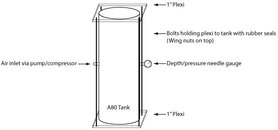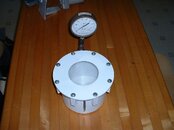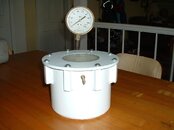Charlie99
Contributor
- Messages
- 7,966
- Reaction score
- 169
- # of dives
- 500 - 999
PhaedrusDive:Granted this'll only let you test to 4ATA (130')
The linked device can pressurize to the same level as 132 in saltwater.I was thinking about 99 FSW at 4ATM.
Gauge pressure vs absolute pressure; atm vs ata; and psig (or psi) vs psia; can be confusing.
The pressure paint pot is rated 60psi, which I assume is 60psi-gauge or 4atm. When used at sea level that will be 75psi-absolute or 5ata (5 atmoshperes-absolute), which is the same pressure level as 132' below the ocean surface.






